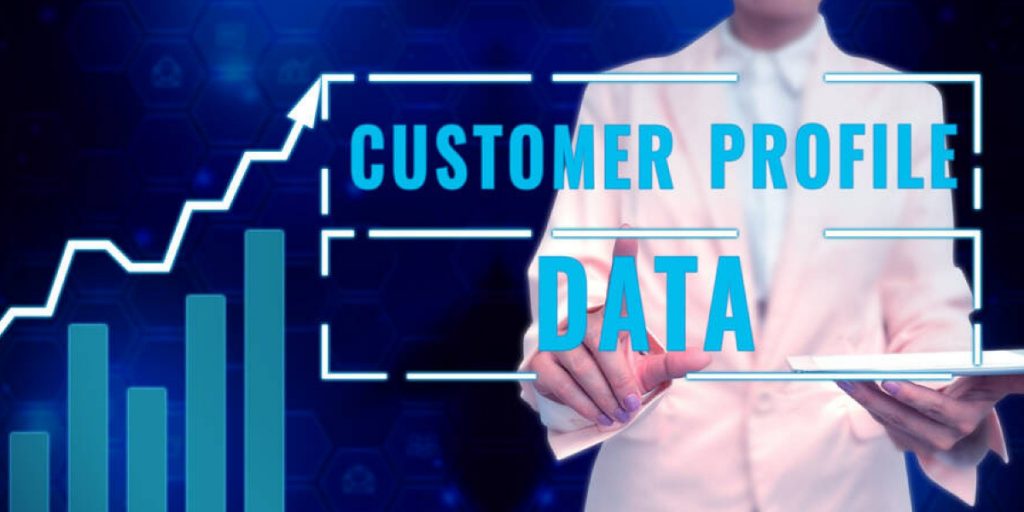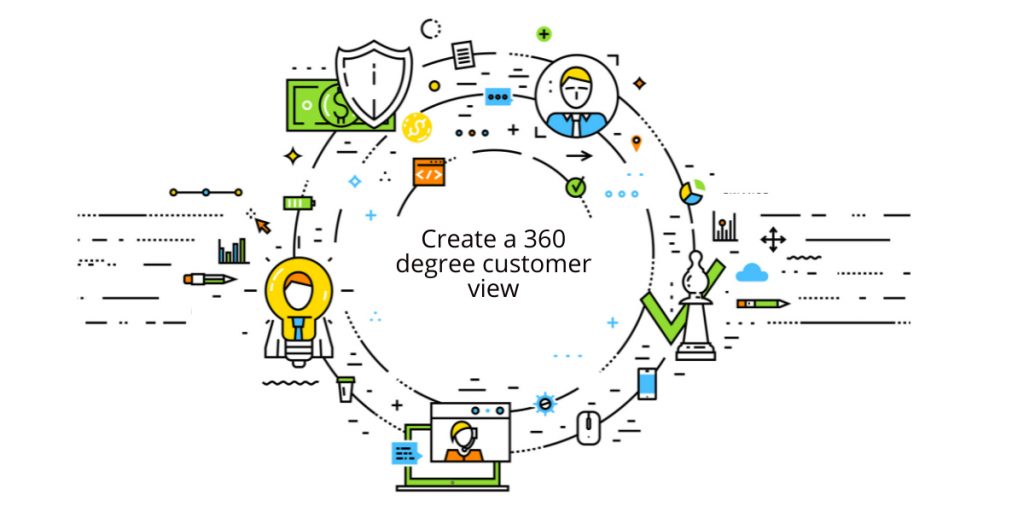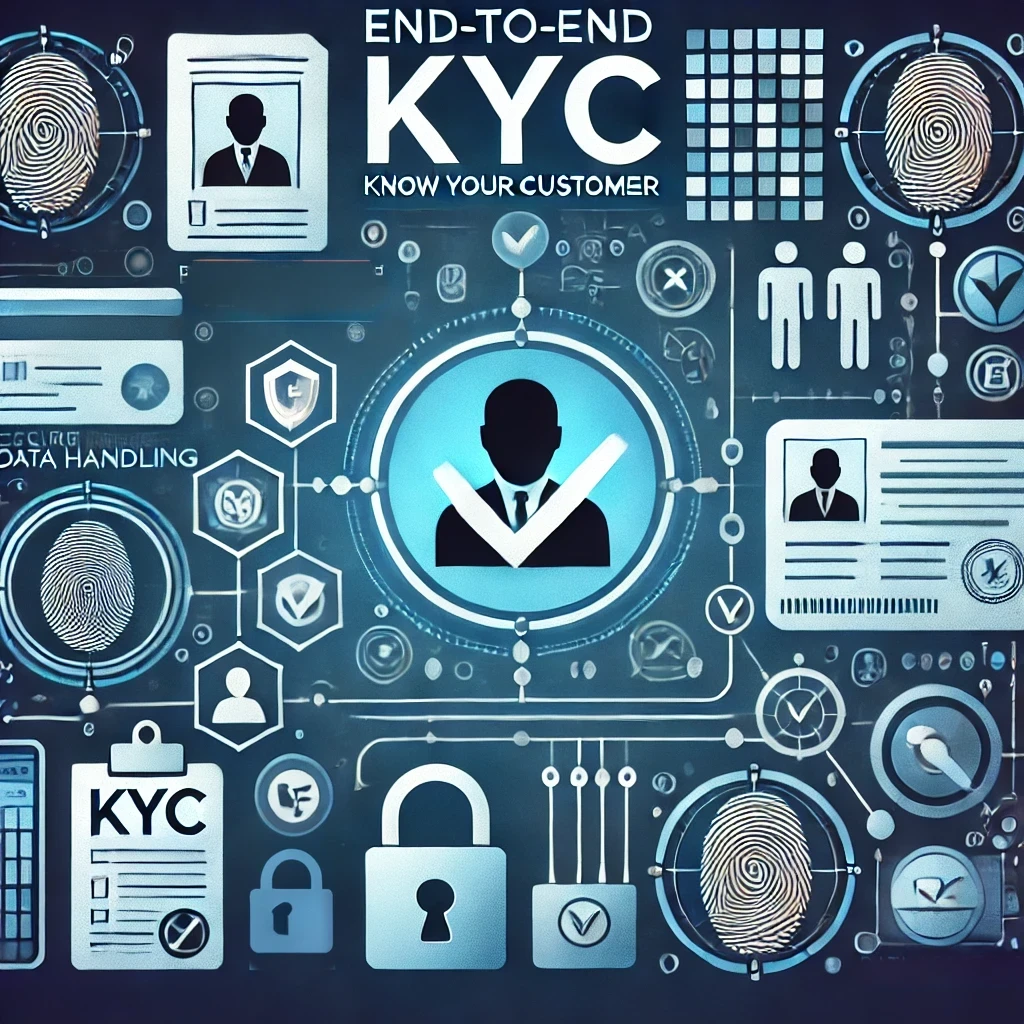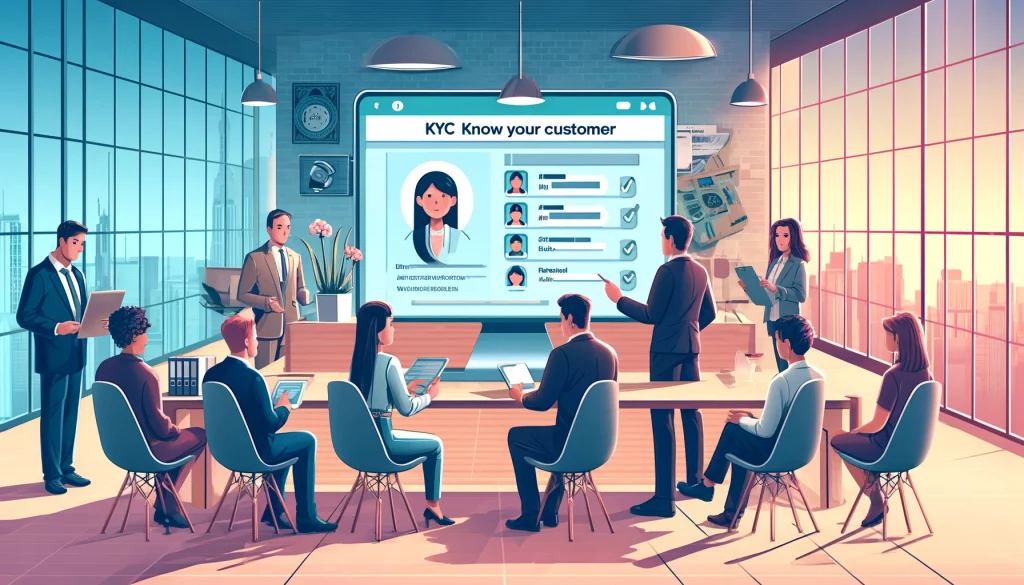If you are a business looking to get the most out of your customer data, then you should consider investing in a single customer view. It’s an effective way to consolidate all your customer data into one organised, easily accessible place. In this blog post, we’ll discuss the benefits of having a single customer view and how it can help improve your business.
What is Single Customer View?
A Single Customer View (SCV) is the practice of collecting, verifying, and storing customer data from multiple sources in one unified location. It enables companies to have a comprehensive understanding of their customers and their needs.
The most commonly used application for SCV is fraud prevention. By aggregating data from multiple sources into one single view, organisations can quickly identify discrepancies between customer records and verify or validate customer data accurately. This helps to detect potential fraud before it happens, enabling businesses to better protect themselves against malicious activities by identifying suspicious behaviour at an early stage.
As well as providing greater protection against fraud, corporations can also use SCV solutions to gain valuable insights into their customers’ needs and preferences in order to provide better personalised services and experiences. In this way, Single Customer View helps organisations form stronger relationships with their customers while simultaneously reducing risk exposure.

Benefits of Implementing an SCV
The benefits of implementing an SCV are numerous. With it, businesses can deliver enhanced data security, improved customer experience, improved data accuracy and accessibility, and reduced costs. Additionally, it allows businesses to avoid data duplication and have a unified, consistent, and holistic view of customer data. By implementing an SCV, businesses can save time and effort and get to know their customers better. It also allows them to deliver truly personalised marketing across channels. Finally, it helps them create a 360-degree view of their customers to further improve their customer experience and increase profitability.
Enhanced data security
When implementing an SCV, businesses can benefit from enhanced data security. All customer data is securely stored in a single central repository, eliminating the need to store data in multiple silos. This helps ensure that customer data is safe and secure and only accessible to those who need it. The SCV also reduces the risk of data breaches and unauthorized access to sensitive customer information, providing peace of mind for both customers and businesses alike.
Improved customer experience
By implementing an SCV, businesses can improve customer experience by gaining a more holistic understanding of their customers. By having access to up-to-date and accurate data in one place, businesses can respond quickly and effectively to customer inquiries. Additionally, they can use the data to create more personalised marketing campaigns that are tailored to their customers’ needs. A single customer view also allows businesses to easily cross-sell and up-sell products or services, further enhancing the customer experience. Ultimately, an SCV enables businesses to provide a better service for their customers and increases customer engagement and loyalty.
Improved data accuracy and accessibility
Using a single customer view provides businesses with improved data accuracy and accessibility. It eliminates the need for manual data entry, which can be time-consuming and prone to errors. Data is pulled from multiple sources and compiled in one centralized location, making it easier for employees to access the most up-to-date information. This helps to ensure that the data is accurate and up to date, which in turn improves customer experience and helps businesses make informed decisions. With a single customer view, everyone in your company can have access to the same data, ensuring that everyone is on the same page.
Reduced costs and improved efficiency
A single customer view (SCV) can help reduce costs and improve efficiency by eliminating the need to store duplicate data. By having all the customer data in one place, businesses can avoid the duplication of effort associated with storing and maintaining separate datasets. Additionally, SCV allows for more accurate data analysis, which can result in better decision-making. This ultimately leads to improved efficiency and cost savings. Furthermore, having an SCV allows businesses to easily access customer data from any location, which can reduce time and labour costs associated with manually retrieving data from multiple sources. As such, implementing an SCV not only provides benefits to customers but also leads to improved efficiency and reduced costs for businesses.
Improved Quality Control
The concept of improved quality control is becoming increasingly important in the digital age. Businesses are taking extra steps to ensure they can offer their customers a safe and secure experience. One way they are doing this is by creating a single customer view, or SCV. This involves collecting and validating customer data to help create a comprehensive profile of each customer that can be used for fraud prevention purposes.
By creating an SCV, businesses can quickly identify any discrepancies in the information provided by customers, allowing them to detect fraudulent activity more effectively before it happens. Additionally, improved quality control allows for more efficient tracking of customer data over time so businesses can better assess incidents like identity theft and other unauthorized transactions. The combination of these tools helps companies protect their customers from malicious activity while also ensuring that the best possible service is provided throughout the entire customer journey.
Risk Mitigation
Risk Mitigation is a practice that has become increasingly important in the digital age. With more customers relying on digital services and engaging with companies through online channels, there is an increased risk of fraudulent activity. Risk mitigation practices are designed to reduce the chances of fraud by creating a single customer view and validating customer data as it flows in from multiple sources.
After creating a single customer view, businesses can access all available customer data from one unified source instead of having to access separate sources for different information. This reduces the chance of errors or discrepancies between sources, allowing for better accuracy when it comes to assessing risk levels associated with individual customers. To further reduce fraud risk, businesses should also ensure the validation of incoming customer data. Global data’s automated systems can help quickly identify any inaccuracies or inconsistencies which may be indicators of fraudulent activity and allow businesses to take appropriate action in response.
Better Collaboration
Collaboration is essential for success in today’s business world, and a single customer view can help companies make the most of it. A single customer view allows organisations to gain an understanding of individual customers and how they interact with the company. This information can then be used to create better collaborations across departments and employees to deliver superior customer experiences.
Companies can leverage a single customer view to ensure that each team has access to relevant data to provide an integrated service experience for customers. A unified approach towards understanding the needs and interests of a customer helps teams build stronger relationships with them, resulting in improved loyalty. It also allows companies to respond quickly and accurately when customers need assistance, creating smoother interactions across all touchpoints.

Avoid Data Duplication
One of the key benefits of implementing an SCV is the ability to avoid data duplication. This helps to reduce the inefficiencies caused by having multiple data sources and enables Organisations to target their marketing efforts more effectively. Organisations can use tools to suppress unwanted records from their marketing databases and prevent the entry of duplicate records into their system. By doing this, they can ensure that their customer data remains accurate and up to date, leading to better customer experience, improved data accuracy and accessibility, as well as reduced costs and improved efficiency.
Potential Problems with Duplication
Customer data duplication is an issue that can have potentially damaging repercussions for businesses. Duplicate customer data can lead to confusion, misinformation, and inconsistencies in data records, which may ultimately lead to lost customers or revenue. Additionally, the risks of fraud and identity theft are significantly increased when duplicate customer information is present.
Organisations must be aware of the dangers of allowing multiple copies of customer data to exist as it creates an opportunity for malicious actors to exploit these discrepancies. Duplicate accounts may alter the accuracy of reports and analytics, leading to misinformed decisions from management teams. Furthermore, customer service representatives may become overwhelmed with duplicate transactions and inquiries due to double bookings or similar issues caused by having two identical records for a single individual.
Organisations should take proactive steps towards preventing duplicate entries and ensuring that all existing customer data remains accurate and secure.
Data Quality Control
Data quality is essential for any business to maintain accurate records and make informed decisions. Data Quality Standards provide organisations with a framework to ensure that data is reliable, up-to-date, and of high value. Data standardization, data deduplication, and data cleansing are three important components of a successful data quality strategy.
Data standardization helps organisations create consistent formats for their data by setting rules on how the input should be entered. This ensures that the same format is used throughout the system, making it easier to integrate with other systems or migrate to new ones in the future.
Data deduplication helps identify and remove redundant information from databases. By reducing duplicate entries in databases, businesses can save time and resources while improving accuracy. Finally, data cleansing ensures all incoming information meets predetermined criteria before being stored into a database.
Data cleansing processes involve activities such as validating or verifying incoming information, removing invalid or duplicated records, correcting errors in existing files and filling in missing values. Adherence to these standards is essential for Organisations that rely on accurate datasets to make informed decisions.
In short, these data quality standards provide a common set of rules for evaluating the quality of incoming and existing datasets before making any decisions based off them.
Automating the Process
In an information-based world, automating the process of data deduplication is becoming increasingly important. Automation can streamline and simplify the task of identifying and combining duplicate records, reducing both the time and cost associated with manual data entry. By freeing up resources that were previously devoted to tedious manual processes, organisations can focus on larger projects, such as developing new applications or improving existing ones.
Data deduplication automation tools such as Global data’s Insiight are designed to identify multiple versions of the same record within a given dataset. These tools compare fields across all records to identify duplicates and then merge them into single entries. This automated process helps reduce errors by eliminating human interpretation from the equation. It also makes it easier for organisations to maintain accurate customer databases without having to manually check for duplicates or miss out on any critical information that could have been found during a manual search.

Unified, Consistent and Holistic Customer Data
A unified customer view allows businesses to access and view their customer’s data in a consistent, holistic, and dependable manner. This helps companies build a comprehensive profile of their customers, which can be used for personalised marketing strategies and improved customer service. By having this unified view, businesses can identify opportunities to provide better services, products, and experiences to their customers. Additionally, a single customer view provides businesses with the necessary information to better understand their customers’ preferences and needs, enabling them to make informed decisions when it comes to their marketing strategies. Having a unified customer view also helps Organisations reduce the risk of data duplication, saving time and effort while ensuring data accuracy.
Save Time and Effort
Using a single customer view can help businesses save time and effort when it comes to managing customer data. By leveraging an SCV, businesses can avoid having to manually enter data into multiple systems, as all the customer data is stored in one place. This allows for more efficient processes, as the data does not need to be re-entered multiple times. Additionally, the unified dataset enables faster and more accurate reporting, saving valuable time and resources. Furthermore, the SCV allows for more efficient segmentation of customers, helping businesses target the right customers with the right message quickly and effectively.

Get to Know Your Customers Better
Having a single customer view allows you to get to know your customers better. By collecting and combining all the data you have about customers and prospects, you can gain a better understanding of their habits and preferences. This enables you to deliver truly personalised marketing campaigns and a better customer experience. You can also use this data to segment customers by their behaviour and attributes, which is essential for creating a 360-degree view of your customers. This in turn enables you to craft more effective marketing strategies that are tailored to the needs of each individual customer. By getting to know your customers better, you can increase profitability and build long-term relationships with them.
Benefits of KYC
The importance of Know Your Customer (KYC) measures for businesses cannot be overstated. KYC is a series of checks and processes that financial institutions employ to identify their customers and verify the accuracy of the information they provide. This helps to prevent financial crime, reduce the risk of money laundering, and assess customer profiles according to risk. KYC compliance is essential for any business operating in the financial services sector, as it provides an extra layer of security against fraudulent activity or money laundering schemes.
Implementing KYC
The implementation of KYC (Know Your Customer) for any business is a vital step in the growth and success of an organisation. With more companies turning to digital solutions, Caspar is a platform that provides an efficient and reliable way to implement KYC for your business. Caspar’s automated system simplifies the process of implementing KYC by streamlining data collection and verification, ensuring compliance with regulations.

Deliver Truly Personalised Marketing
With a single customer view, businesses can deliver truly personalised marketing across channels. By leveraging data from across their customer relationships, businesses can create a 360-degree view of their customers, allowing them to better understand their individual needs and preferences. This allows them to create tailored experiences that are optimised for each customer. A multichannel approach to marketing helps ensure that customers are met at each of their touchpoints with timely, relevant, and customized experiences. This can lead to higher customer satisfaction levels and improved engagement. Additionally, businesses can use customer data to develop predictive models and better target their marketing campaigns. With an SCV in place, businesses have the data and insights needed to create more effective and efficient campaigns that drive greater ROI.

Creating a 360-degree View of Your Customers
Creating a 360-degree view of your customers is essential for providing an optimal customer experience. It allows you to store all customer information in one location, allowing you to get a comprehensive overview of all their characteristics at one glance. This helps you anticipate future needs and create ideal consumer experiences through custom-tailored solutions and interactions. Additionally, having a single customer view eliminates data duplication and provides you with unified, consistent, and holistic customer data. These advantages enable you to save time and effort while also getting to know your customers better so that you can deliver truly personalised marketing campaigns. A 360-degree view of your customers is therefore essential for improving customer experience, enhancing data security, increasing profitability, and reducing costs.
Gathering Customer Data
Gathering customer data is essential for any business. By having a single customer view, companies not only gain insight into their customers’ needs and preferences but can also better tailor products and services to meet those needs.
The process of collecting customer data starts with verifying and validating the information gathered. This includes ensuring that the data is accurate and up to date by using reliable sources such as Global data’s platforms. Once the data has been collected, it must then be organised in a way that enables easy analysis of trends, market segments, customer profiles and more. Companies can use this information to tailor their marketing strategies for maximum effectiveness as well as create personalised experiences for customers on different channels.
Defining Customer Profiles
Defining customer profiles involves collecting demographic information such as age, gender, location, and income; psychographic information such as interests, values, beliefs, and lifestyle; and behavioural information such as purchase history, web page visits and response rate. By collecting this data from a variety of sources companies can develop comprehensive insights into who their customers are and what they want from them. This helps them tailor products and services accordingly to increase engagement levels.
Analysing Customer Profiles
Analysing customer profiles is a critical aspect of risk assessment and fraud prevention. Companies must be able to identify customers that pose a risk to protect their own assets as well as those of the customer. By taking the time to analyse customer profiles, companies are better equipped to provide secure services and products while reducing fraud-related losses.
The process of analysing customer profiles involves gathering relevant information from sources such as public record databases, social media information, and supplied contact information. The collected data can then be used to create an accurate picture of a customer’s identity and background to assess whether they are a potential risk or not. Moreover, by using sophisticated technology such as Global data’s SCV (Single Customer View), companies can easily access all relevant data in real-time and accurately analyse it for more efficient fraud prevention.
Integrating the 360 Degree View
Integrating the data can be done through various methods, such as leveraging technology platforms, gathering insights from analytics teams, and conducting surveys with customers. This data allows companies to gain a better understanding of their customers’ preferences and behavioural patterns, so that they can provide tailored services. Additionally, it helps them identify potential opportunities or areas for improvement in their business operations.
By integrating the verified and consolidated customer data into their service, companies can make more informed decisions about product development and marketing strategies based on customer data which will help them drive better results. Ultimately, this integration of data provides valuable insight needed for long-term success and growth in the industry.
Improve Customer Experience
Having a single customer view can greatly improve customer experience. With a unified view of customer data, businesses can quickly identify customer needs and provide personalised services that cater to their individual preferences. By using SCV to analyse customer behaviour, companies can also anticipate future needs and offer tailored services that meet those expectations. Additionally, marketers can use SCV to create better targeted campaigns and deliver truly personalised messages that increase customer engagement and loyalty. Furthermore, having a single view of the customer can help companies identify potential problems before they arise and take proactive action to ensure a positive customer experience.
Increase Profitability
A Single Customer View is an essential tool for businesses looking to increase profitability. By providing unified, consistent, and holistic customer data, an SCV enables companies to gain valuable insights into their customers’ needs and preferences. This enables them to tailor their products and services to meet customer demands, increasing customer satisfaction and sales. Additionally, by avoiding data duplication and improving data accuracy and accessibility, businesses can save time and effort, reducing costs and increasing profits. All in all, implementing a Single Customer View can help businesses significantly increase their profitability.
Conclusion
In conclusion, an SCV provides businesses with a powerful tool for gaining a comprehensive understanding of their customers. With improved data security, accuracy, and accessibility, companies can create a single customer view that offers them the insights they need to deliver personalised marketing and improve their customer experience. By avoiding data duplication, they can save time and effort while getting to know their customers better. An SCV also gives businesses the ability to create a 360-degree view of their customers and ultimately increase profitability. Taking all these benefits into account, it’s clear that investing in an SCV is an invaluable asset for any business looking to gain deeper insights into their customers.



